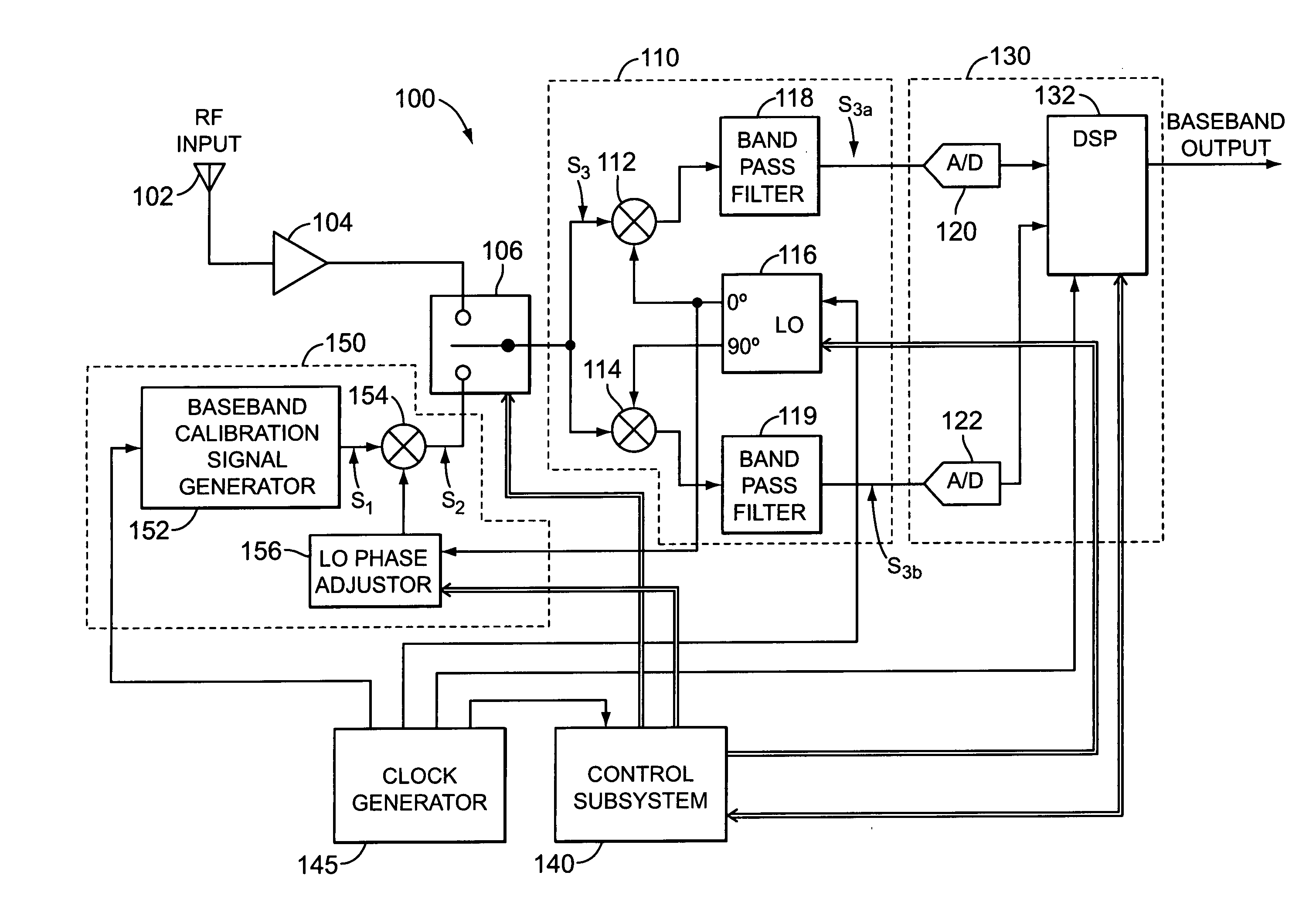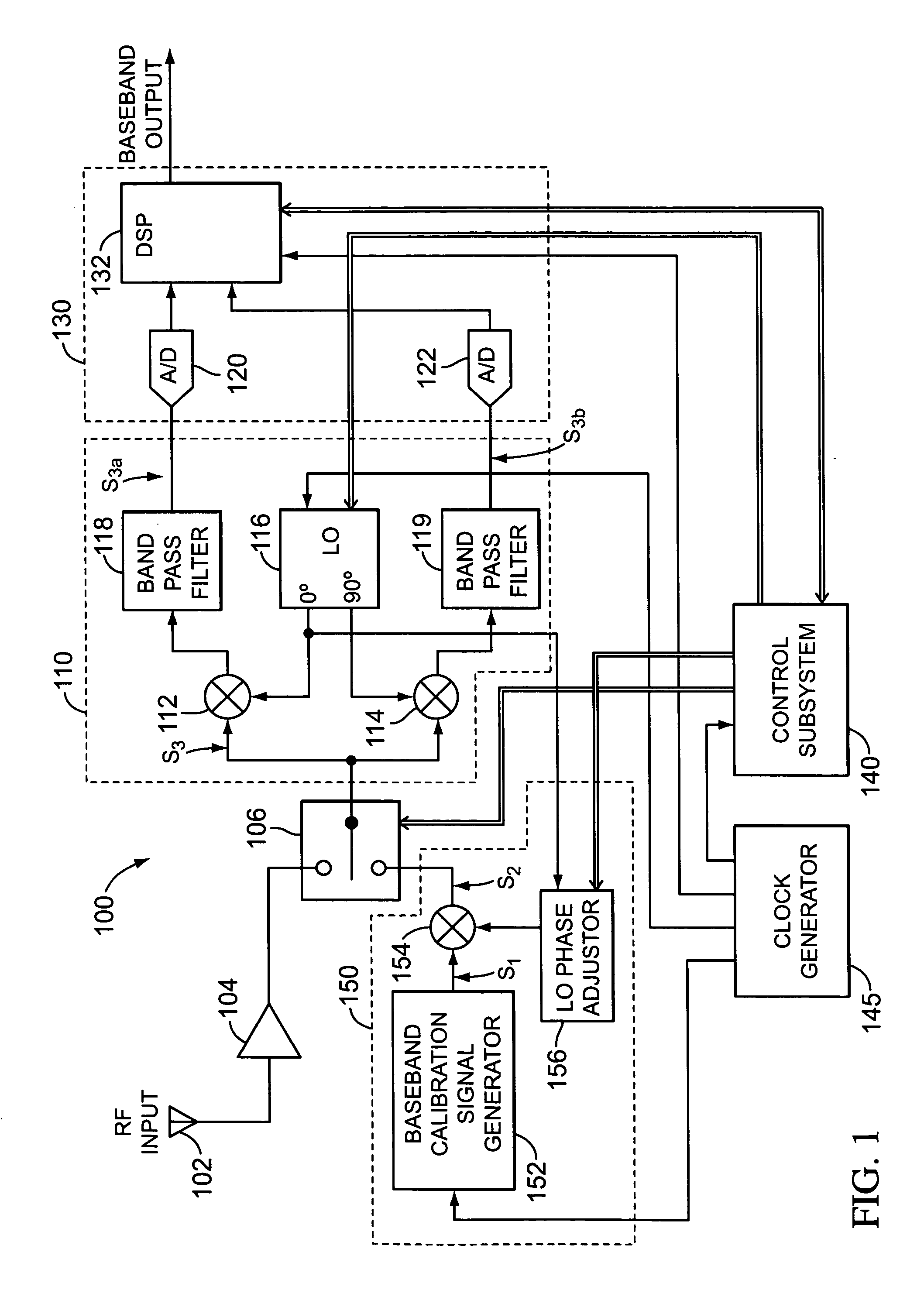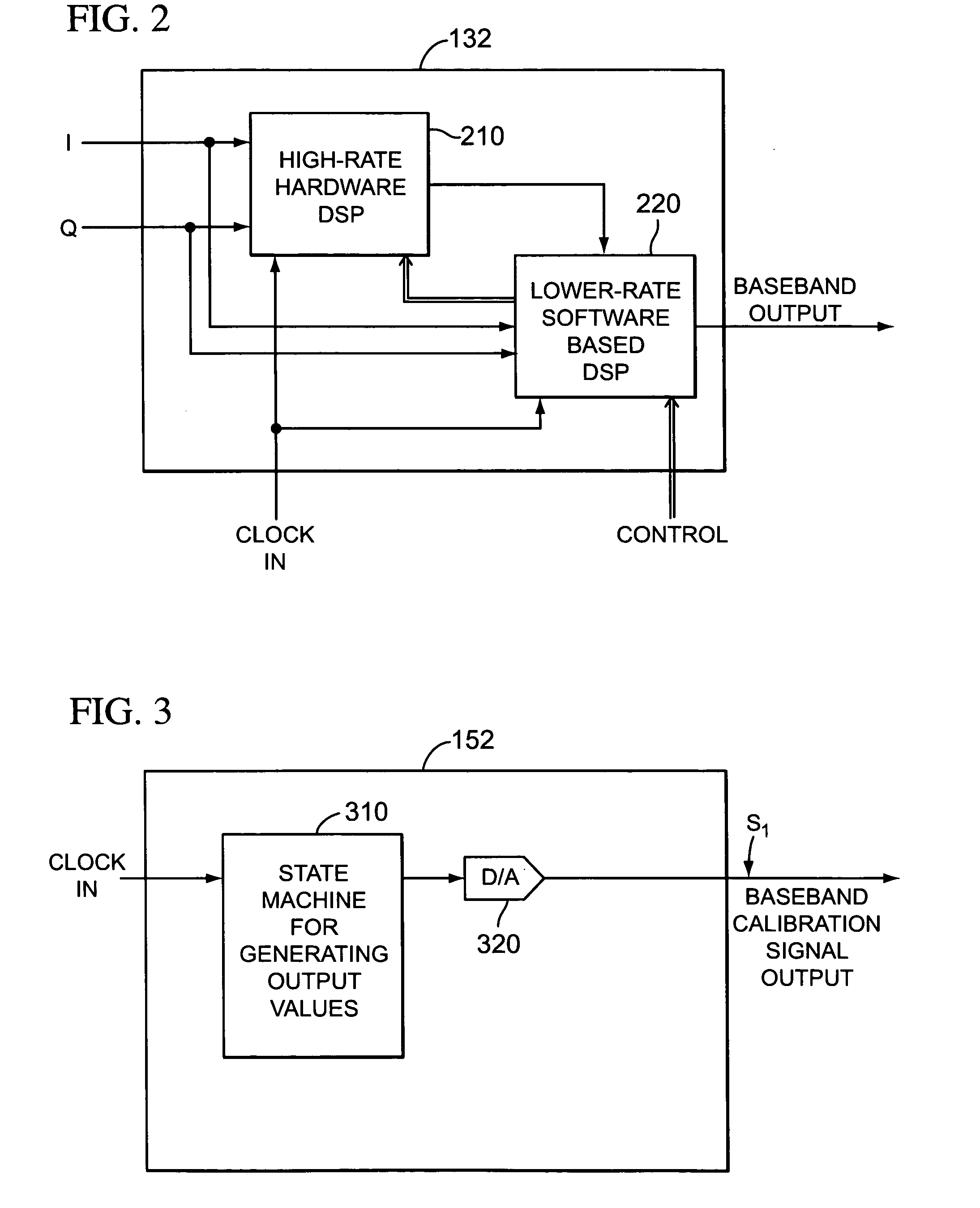Vector calibration system
a calibration system and vector technology, applied in the field of vector calibration systems, can solve the problems of difficult to determine with enough precision, limited precision to which such systems can correct mismatches, etc., and achieve the effects of improving performance, improving accuracy and efficiency, and improving accuracy of mismatch determination
- Summary
- Abstract
- Description
- Claims
- Application Information
AI Technical Summary
Benefits of technology
Problems solved by technology
Method used
Image
Examples
Embodiment Construction
[0031] A vector calibration system according to various aspects of the present invention provides numerous benefits, including concurrently determining vector mismatch between a plurality of signal paths across a range of frequencies. Such a system can be advantageously implemented in any communication system that separates signals using a plurality of signal paths having a predetermined vector relationship. As may be better understood with reference to FIG. 1, for example, a low-IF receiver 100 employs quadrature signal paths to separate desired signals from image signals having opposite frequencies. Conventional low-IF (low intermediate frequency) receivers reduce the complexity of IF processing by performing the processing at frequencies that are much closer to the baseband frequency range of a signal of interest than the RF frequency of the signal. In a receiver variation having circuitry similar to that of receiver 100, quadrature signal paths are employed to separate frequency...
PUM
 Login to View More
Login to View More Abstract
Description
Claims
Application Information
 Login to View More
Login to View More - R&D
- Intellectual Property
- Life Sciences
- Materials
- Tech Scout
- Unparalleled Data Quality
- Higher Quality Content
- 60% Fewer Hallucinations
Browse by: Latest US Patents, China's latest patents, Technical Efficacy Thesaurus, Application Domain, Technology Topic, Popular Technical Reports.
© 2025 PatSnap. All rights reserved.Legal|Privacy policy|Modern Slavery Act Transparency Statement|Sitemap|About US| Contact US: help@patsnap.com



